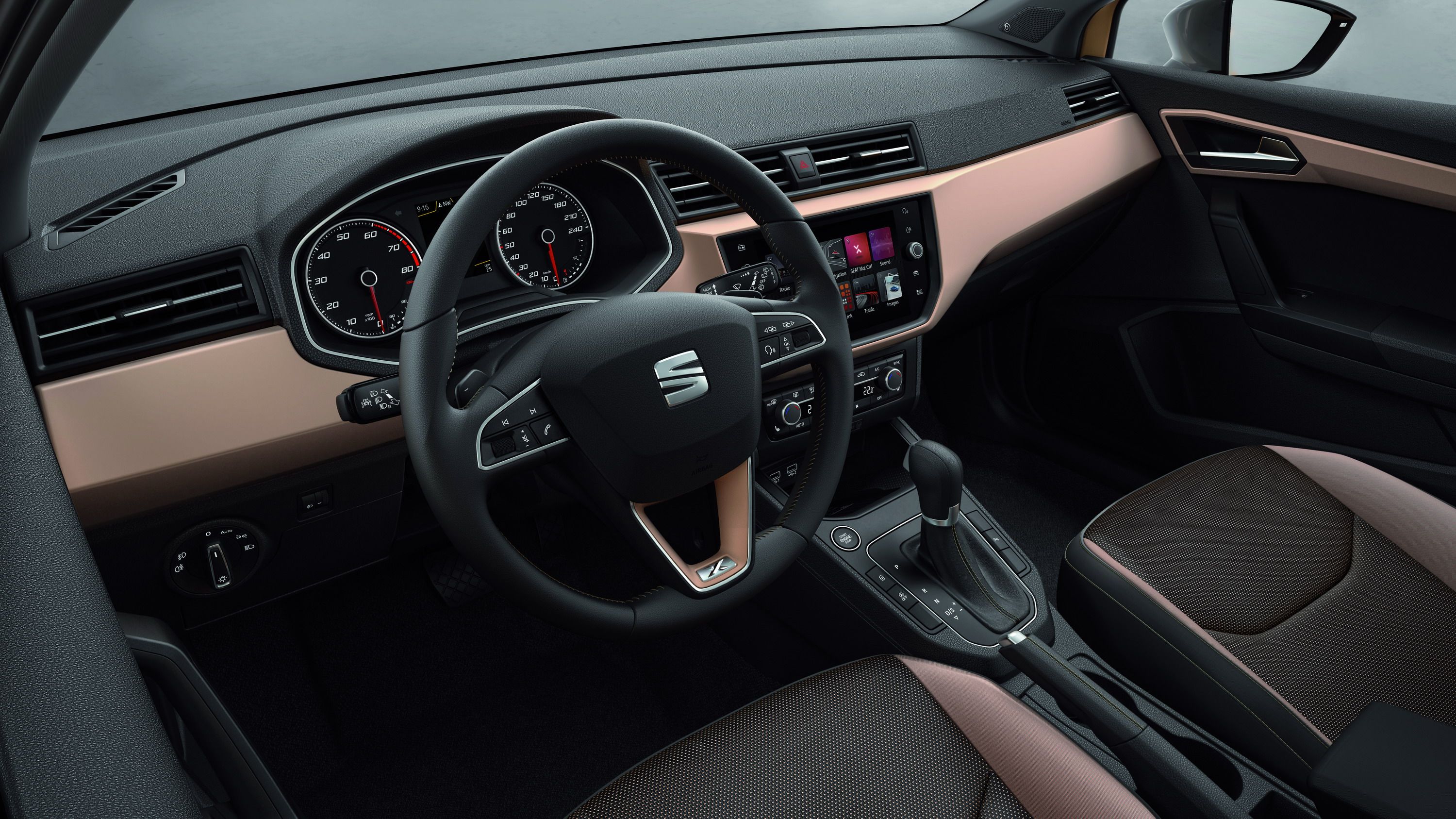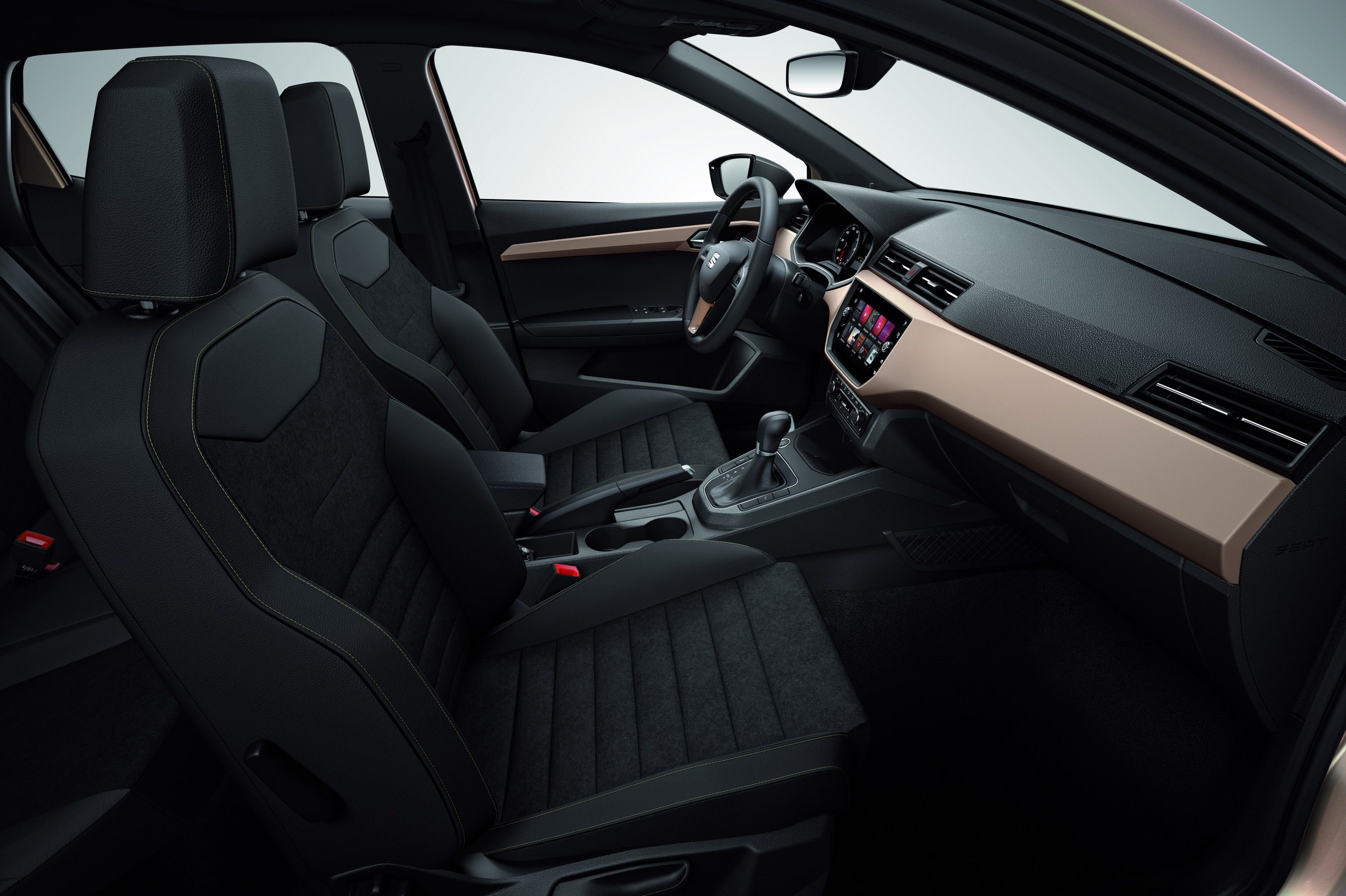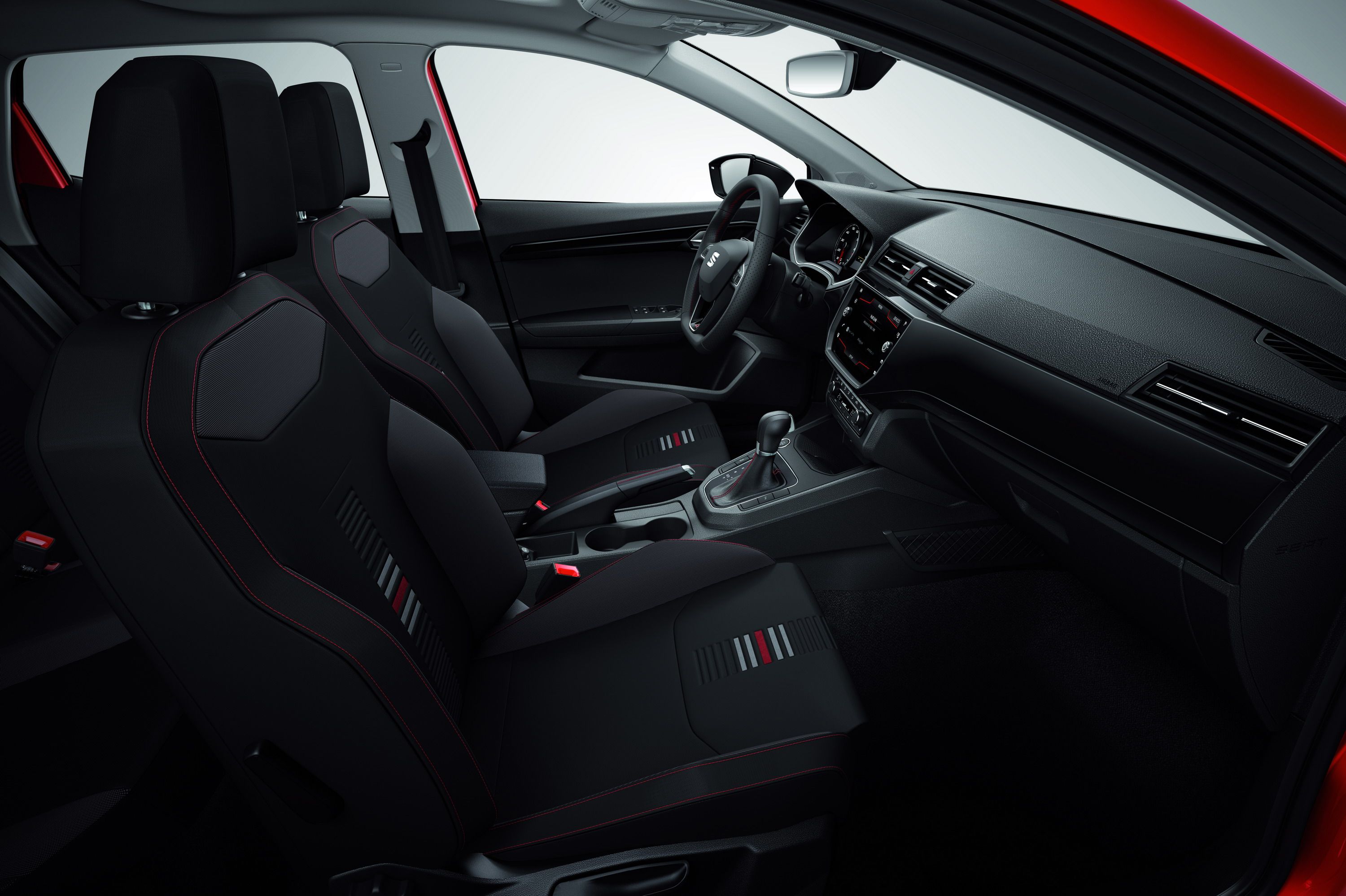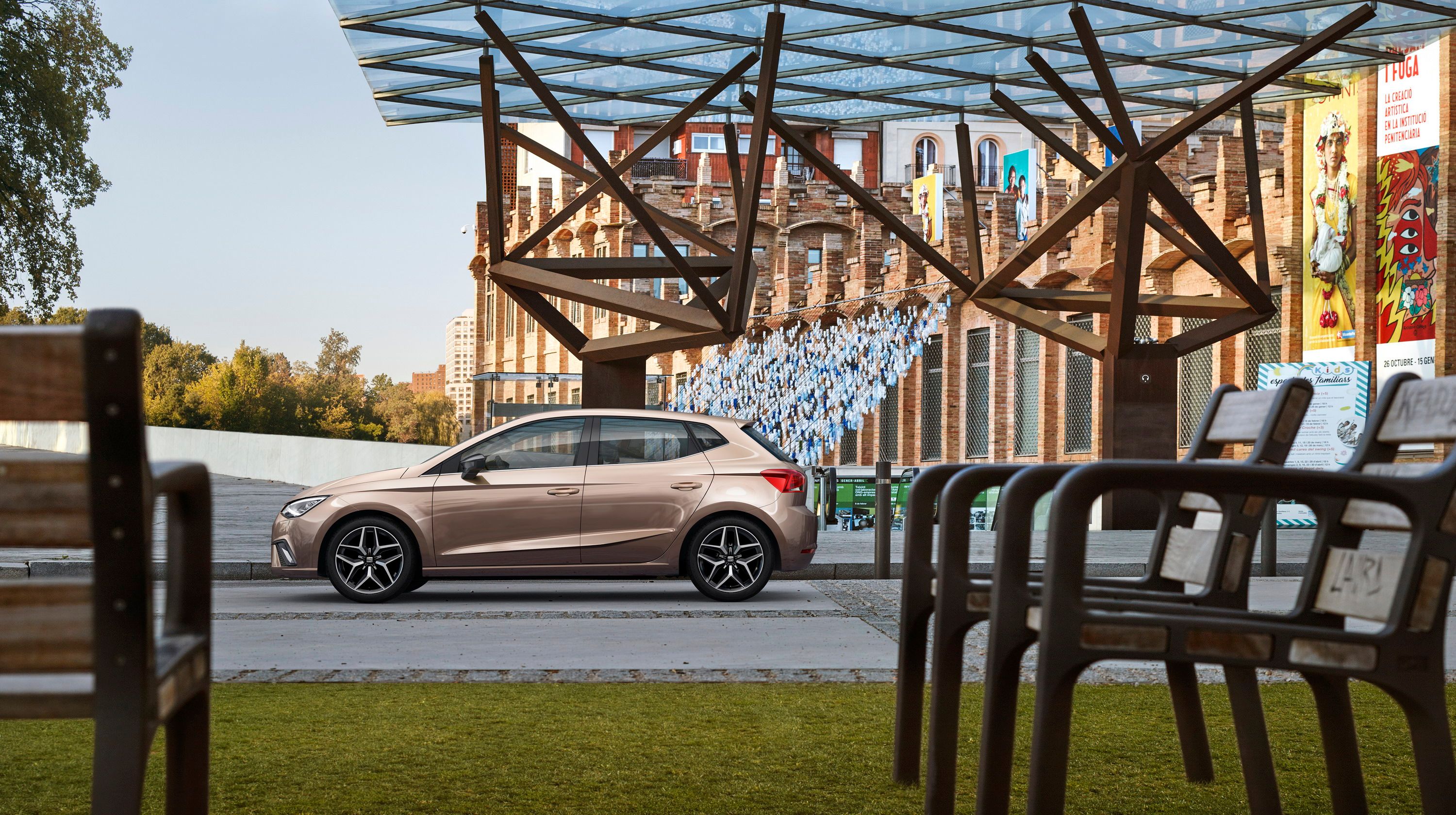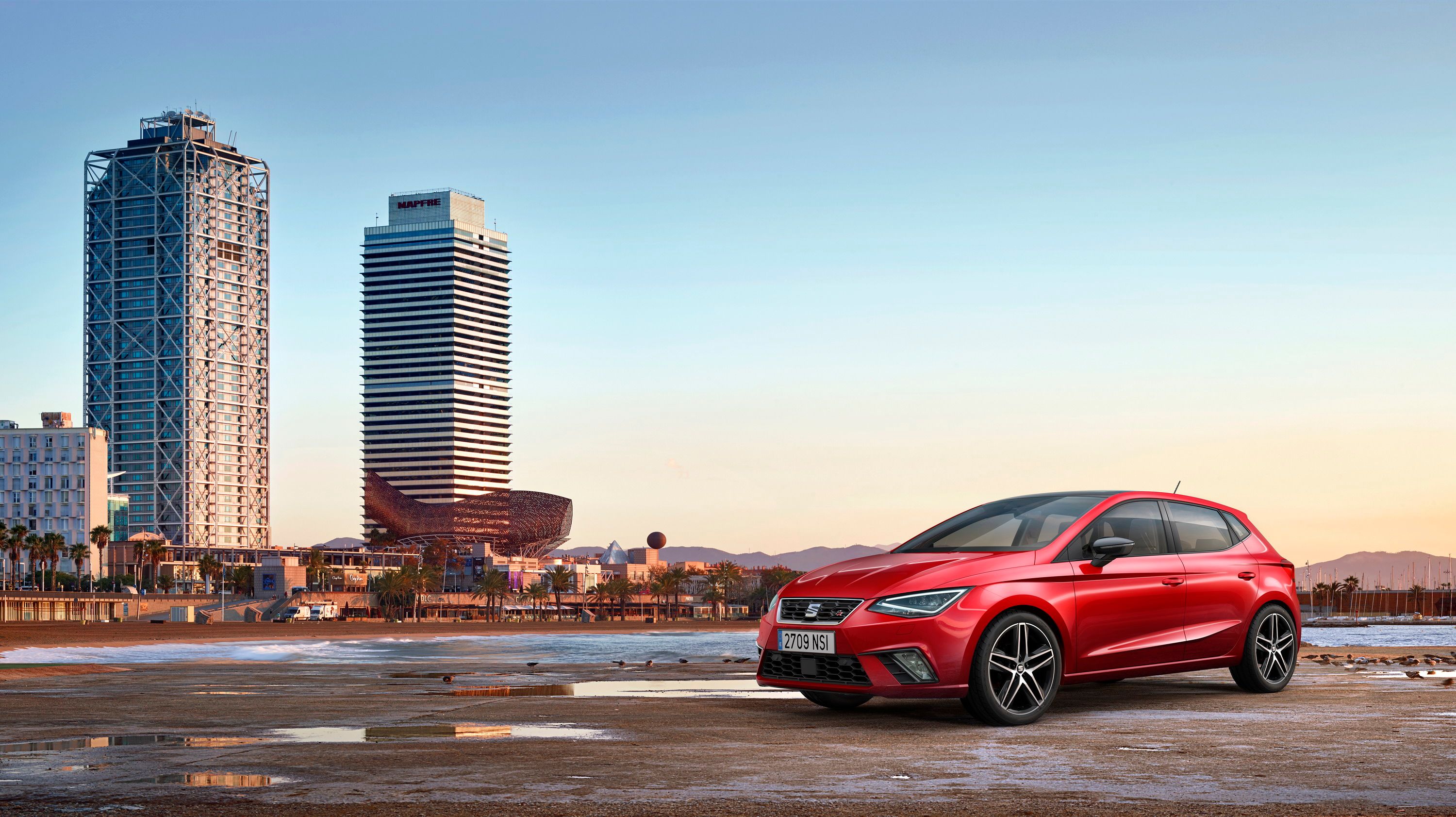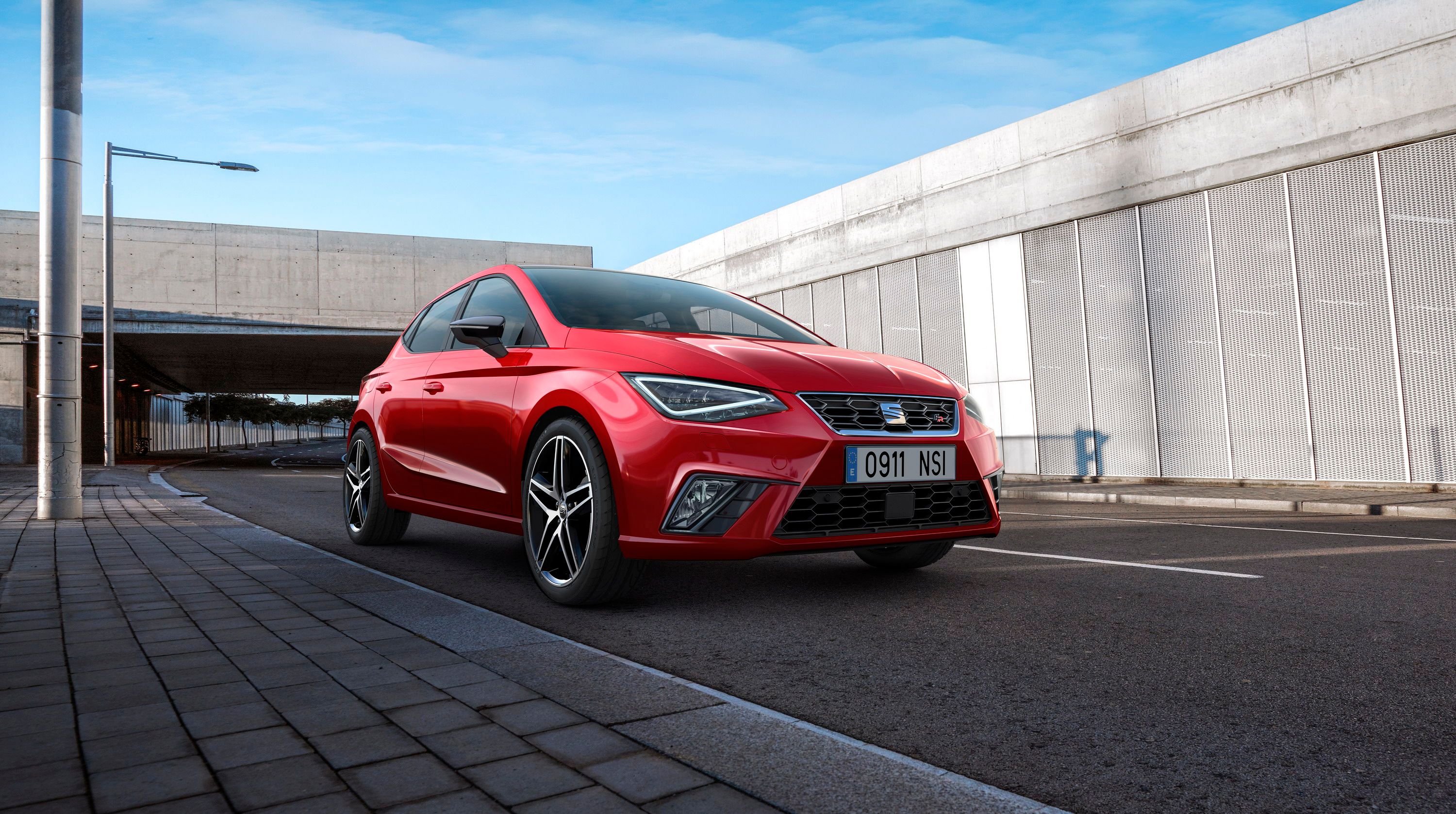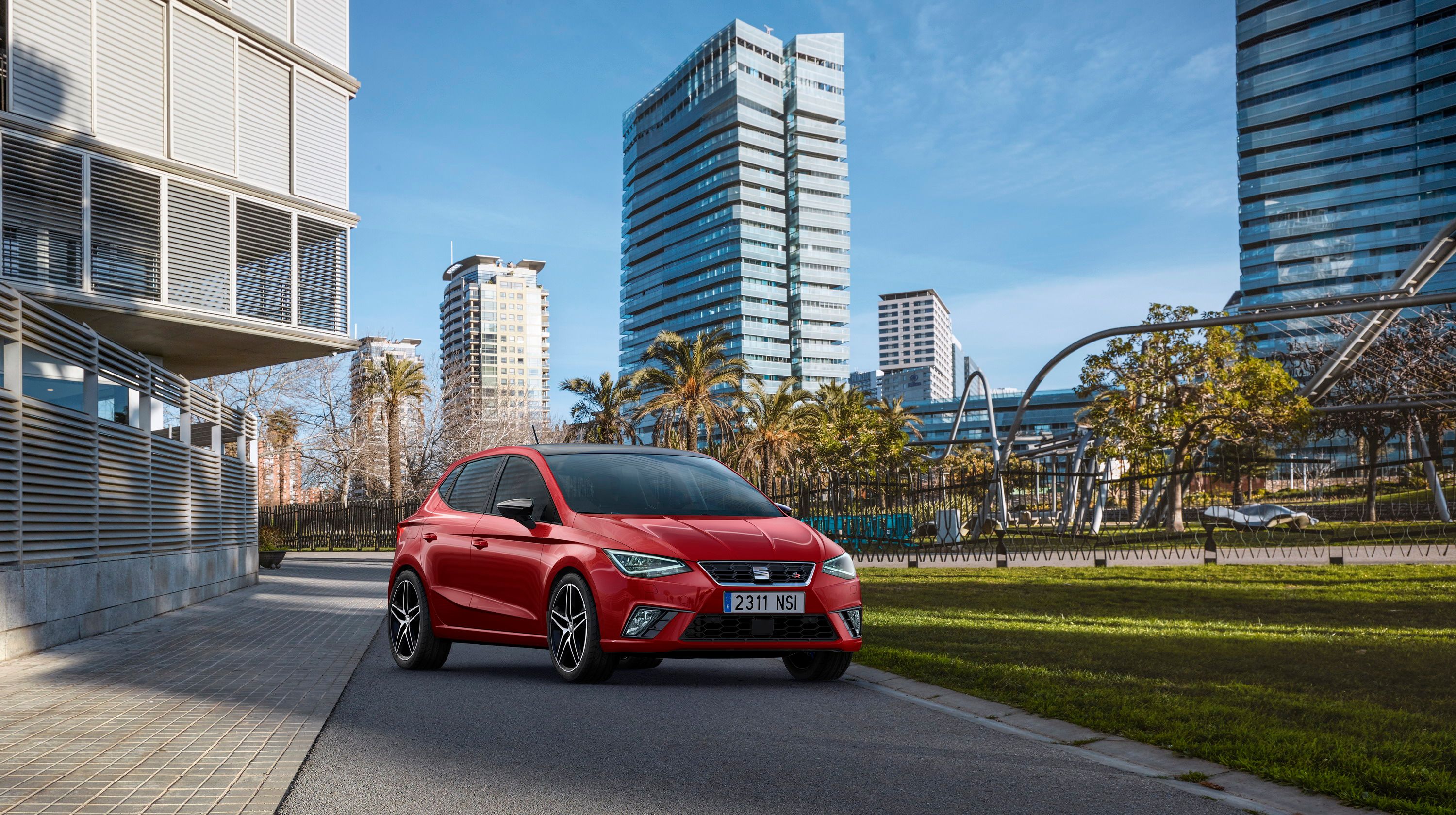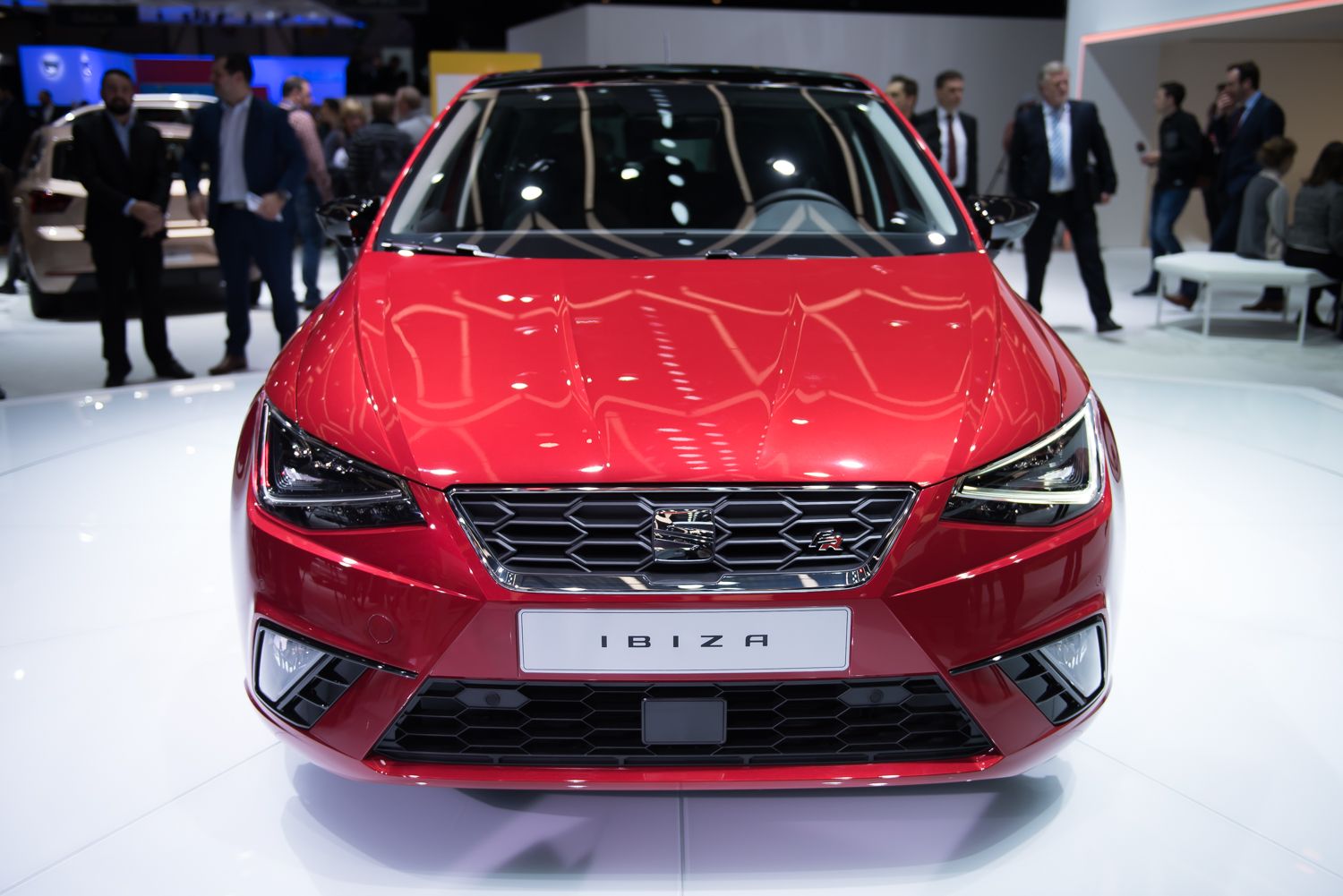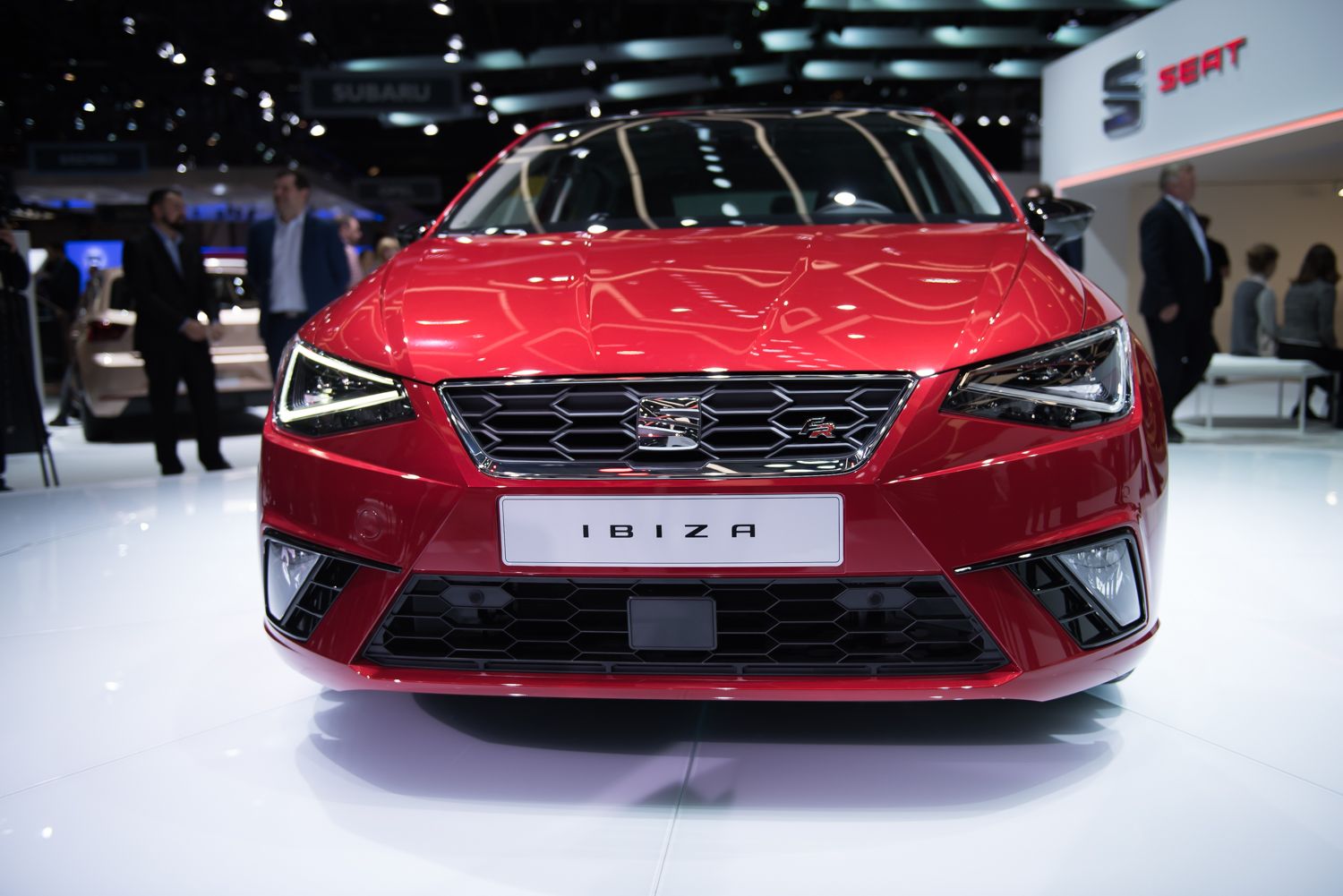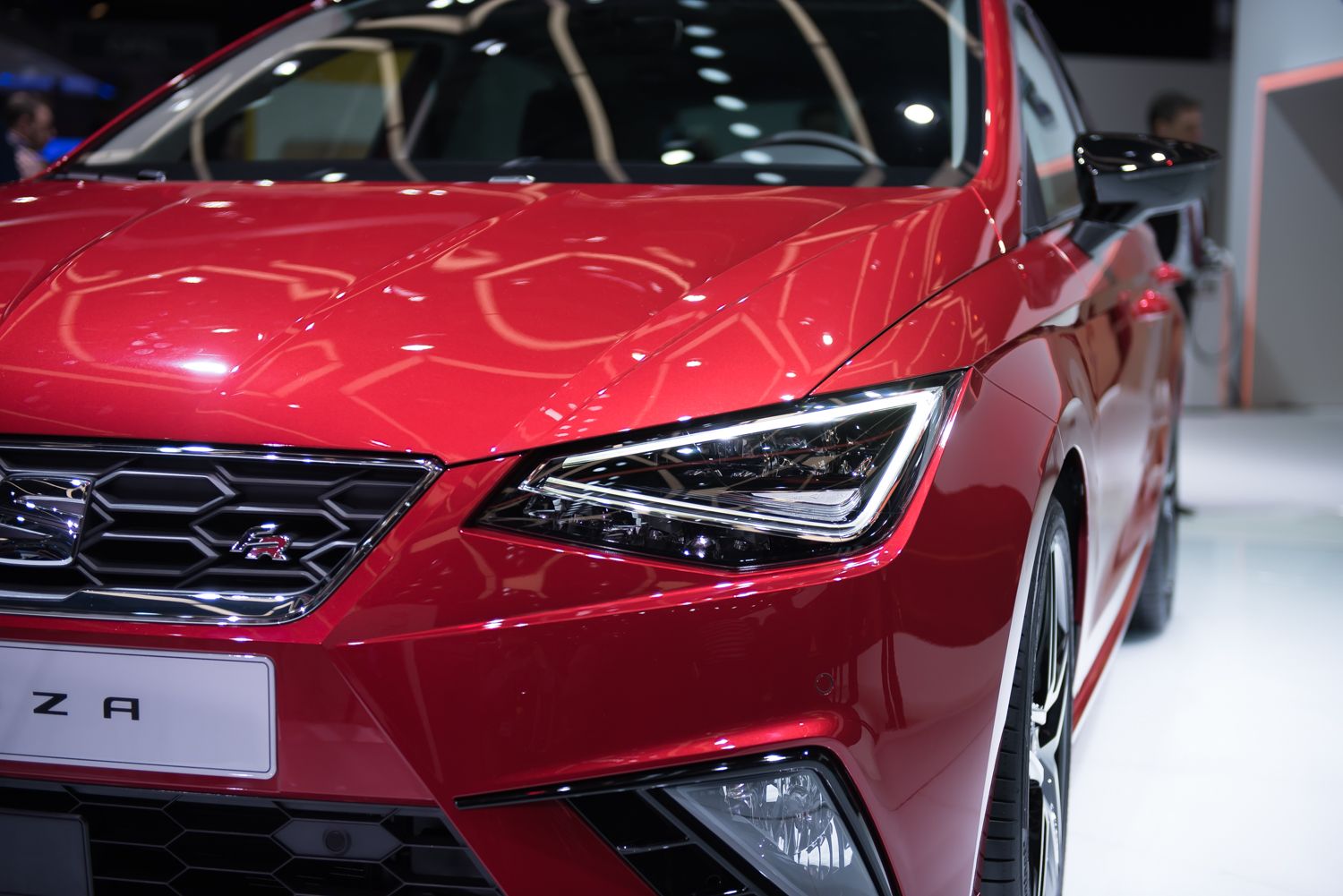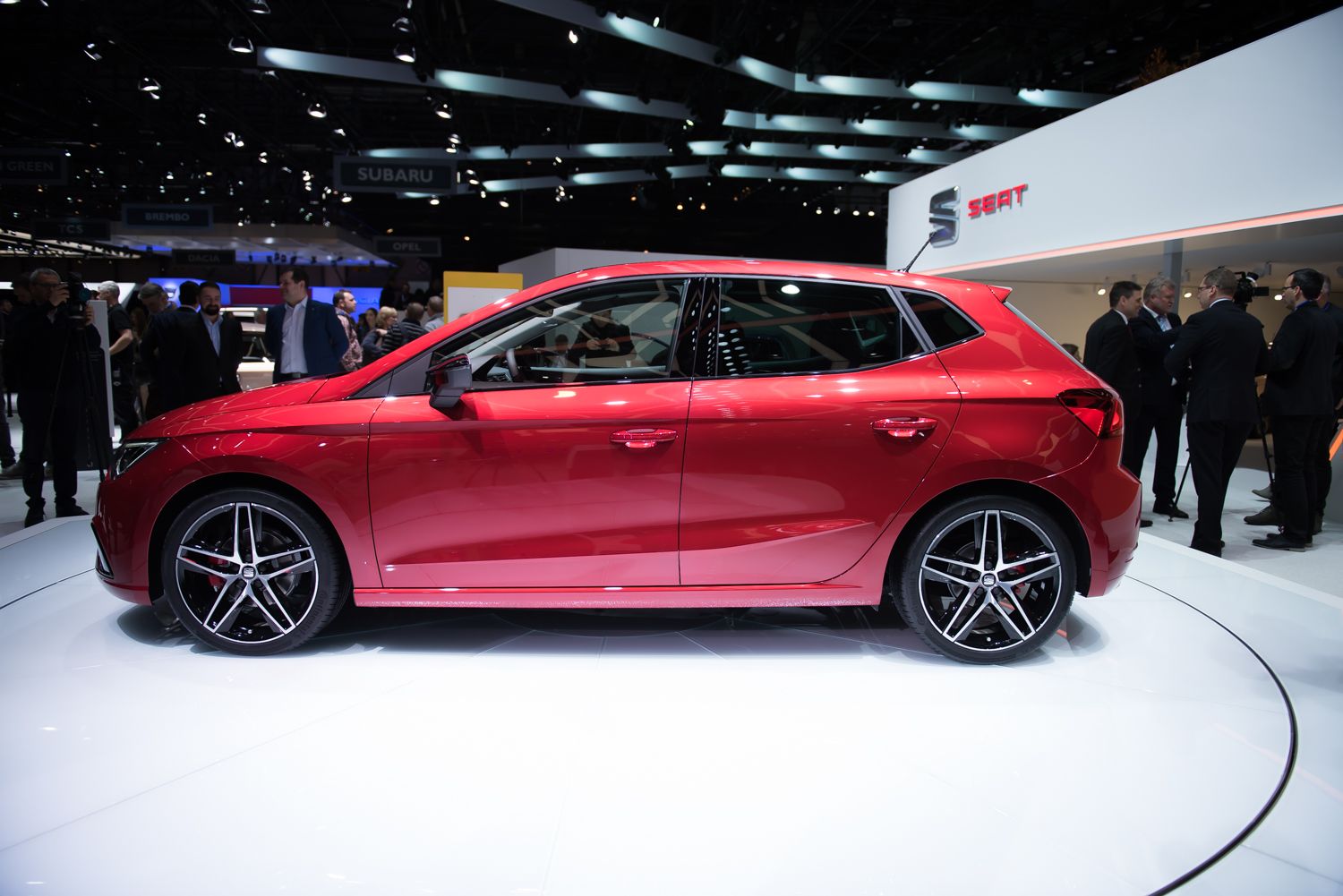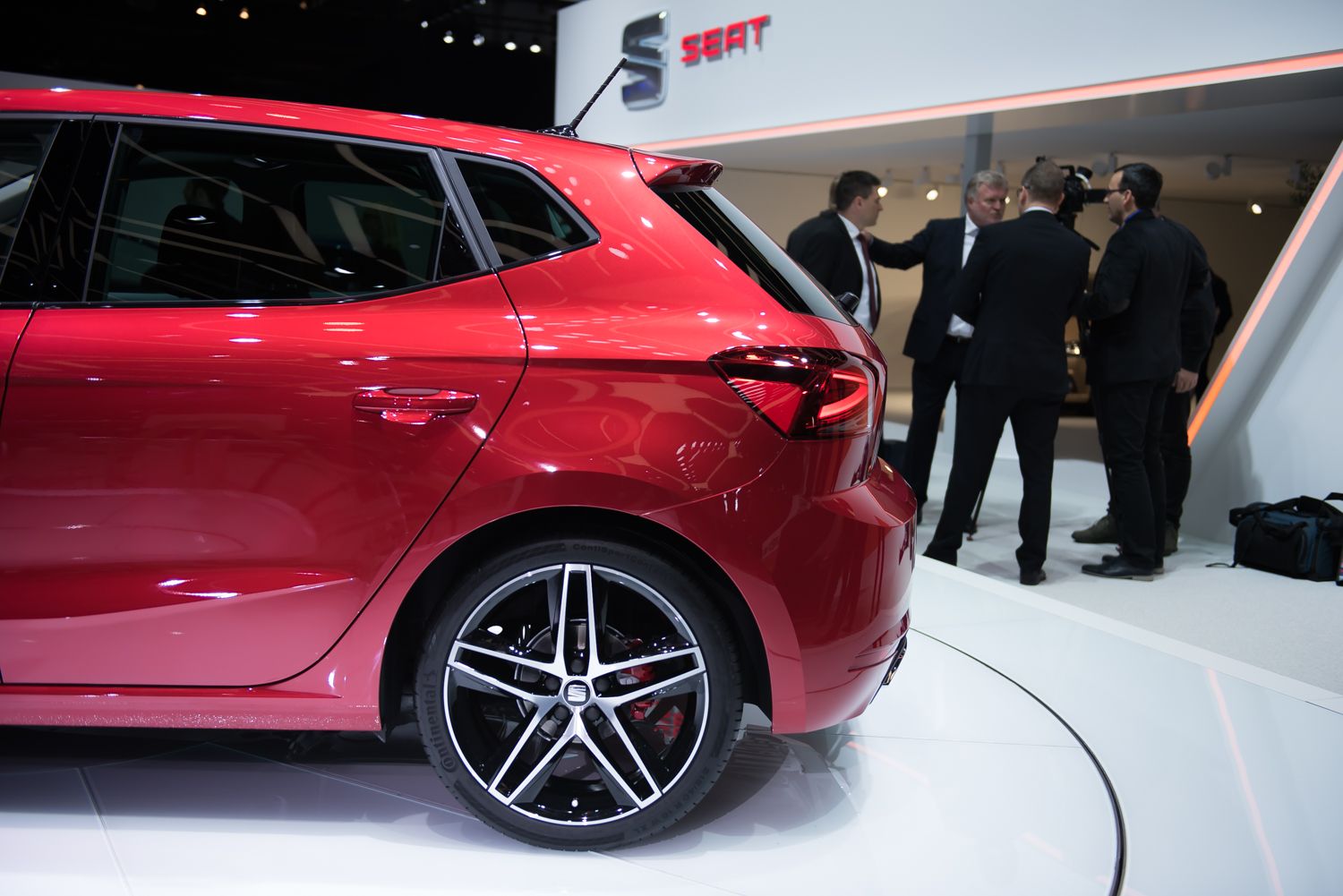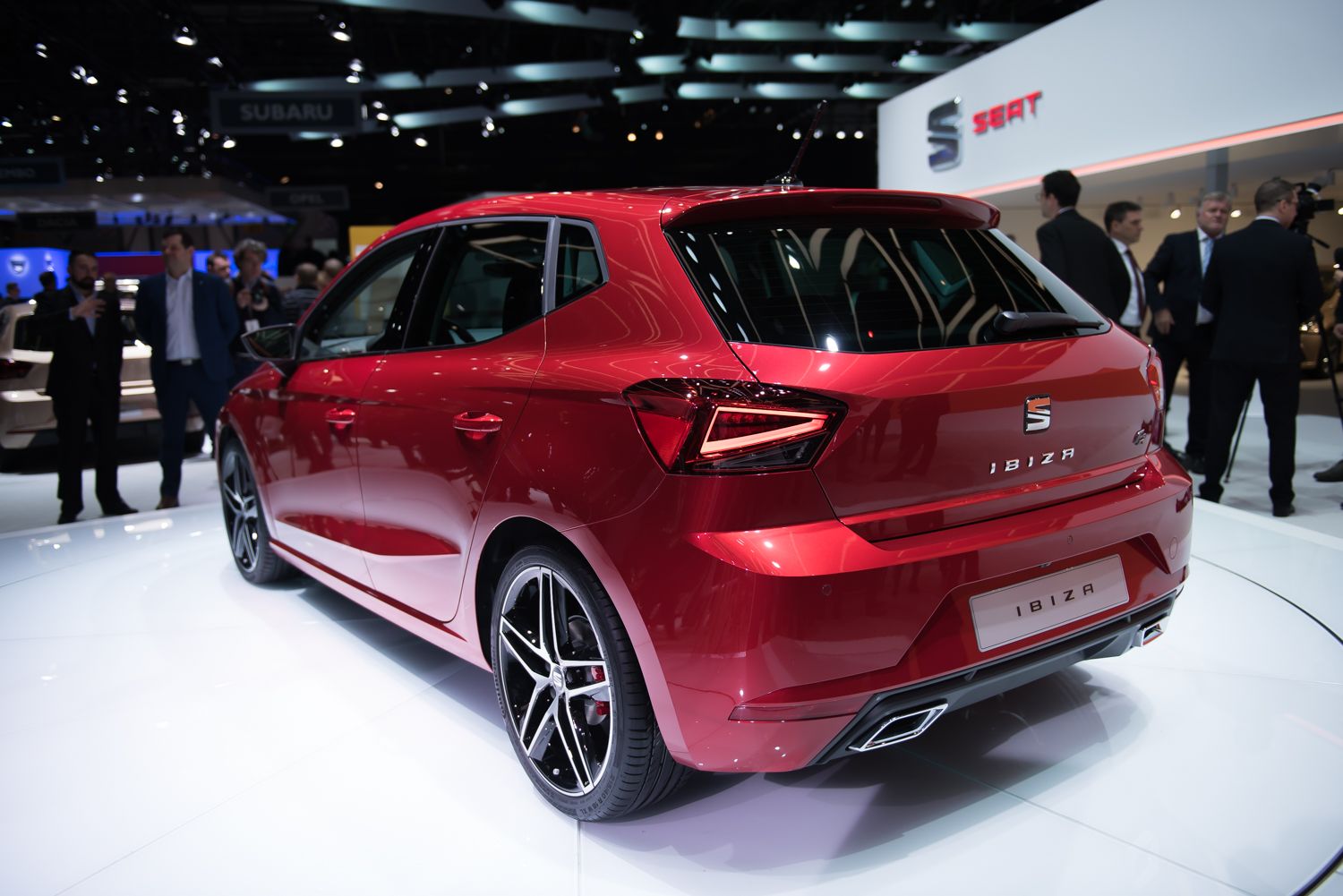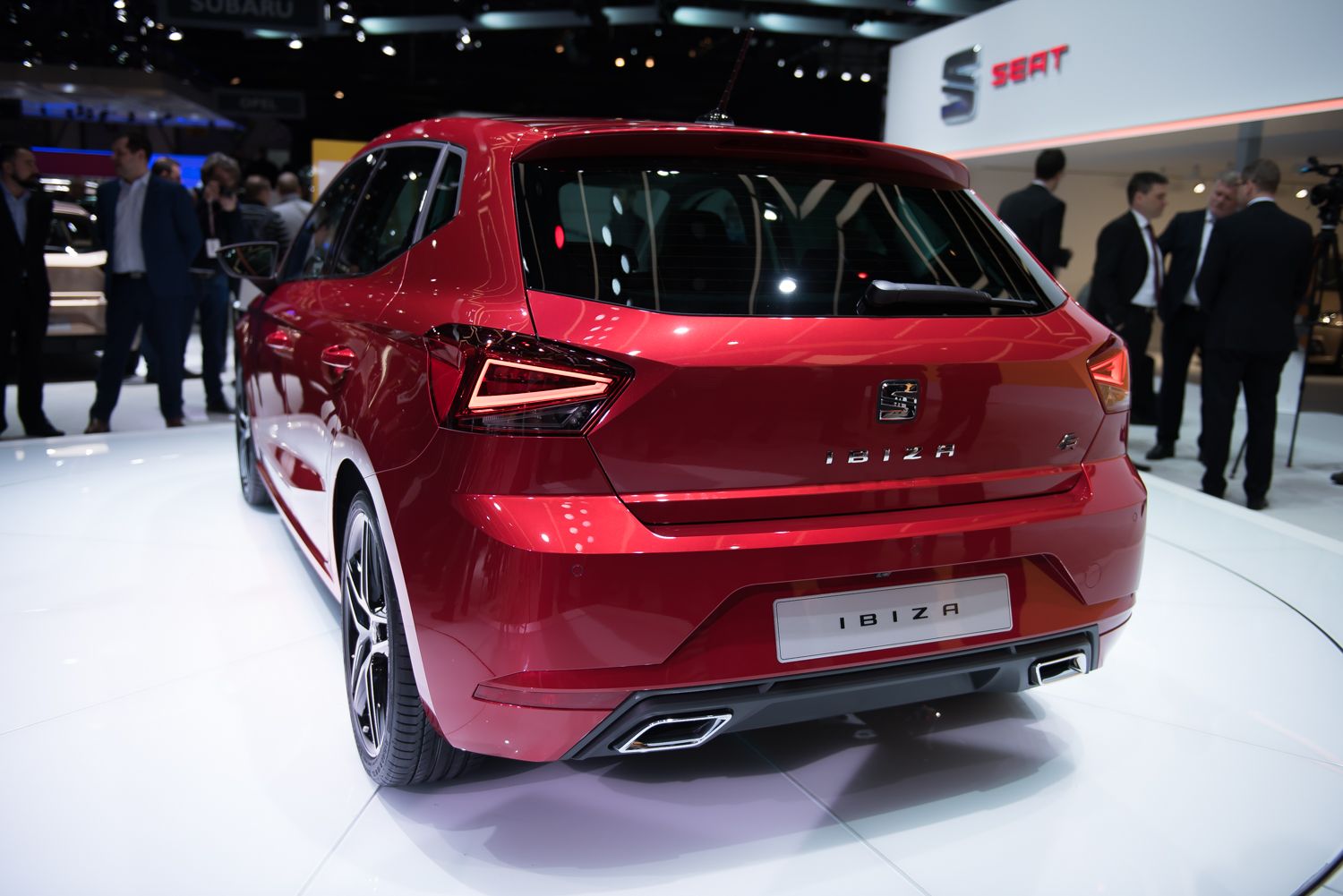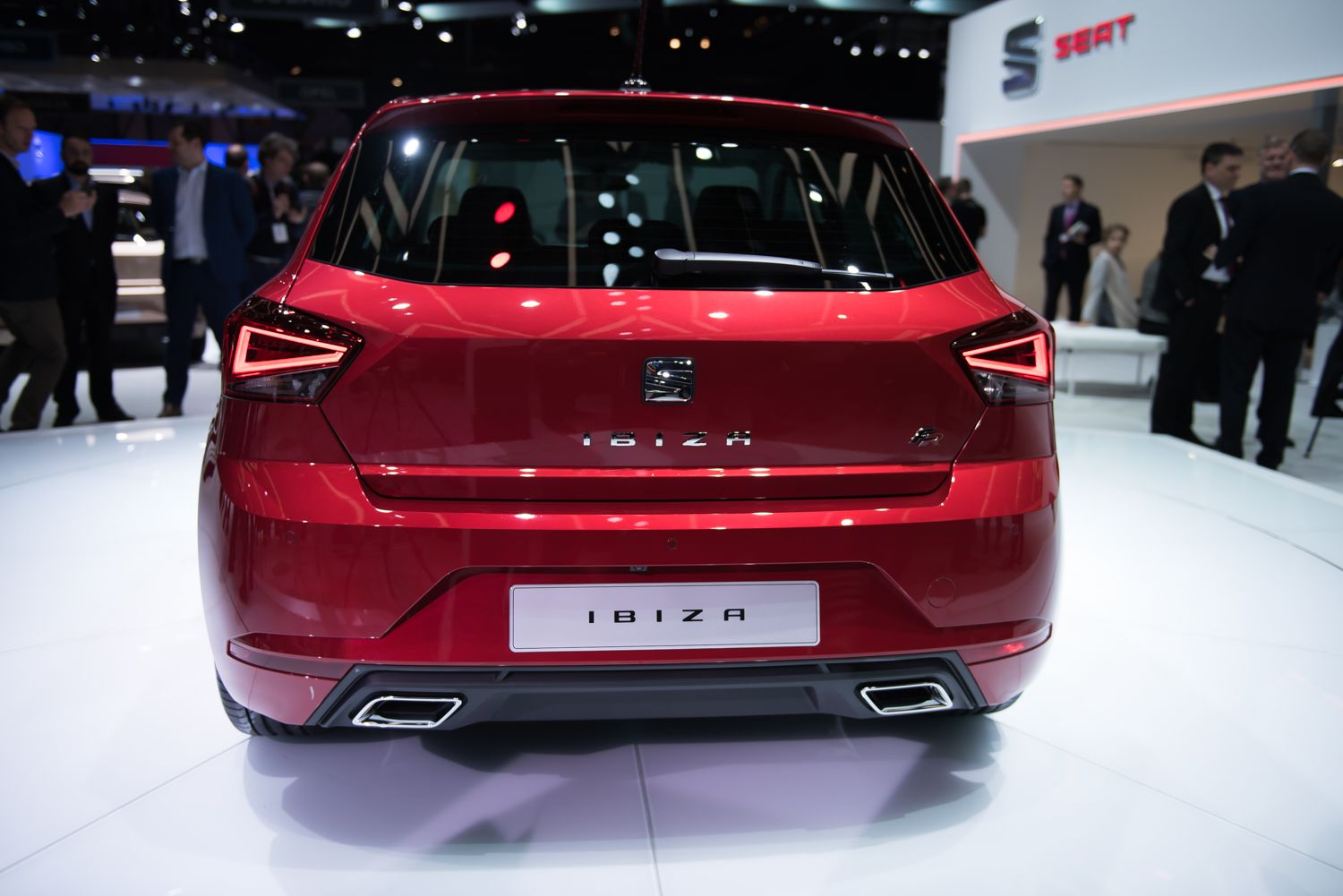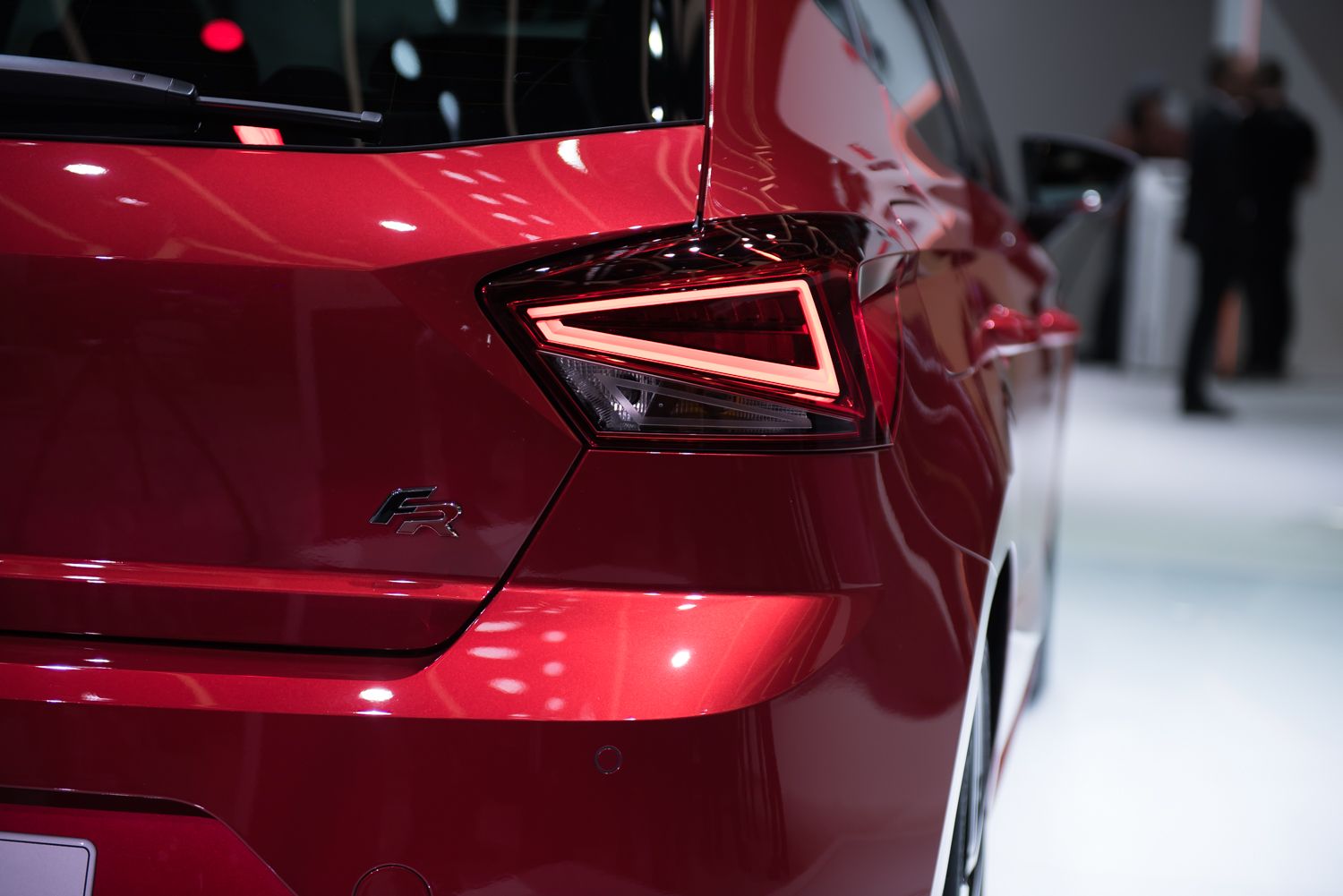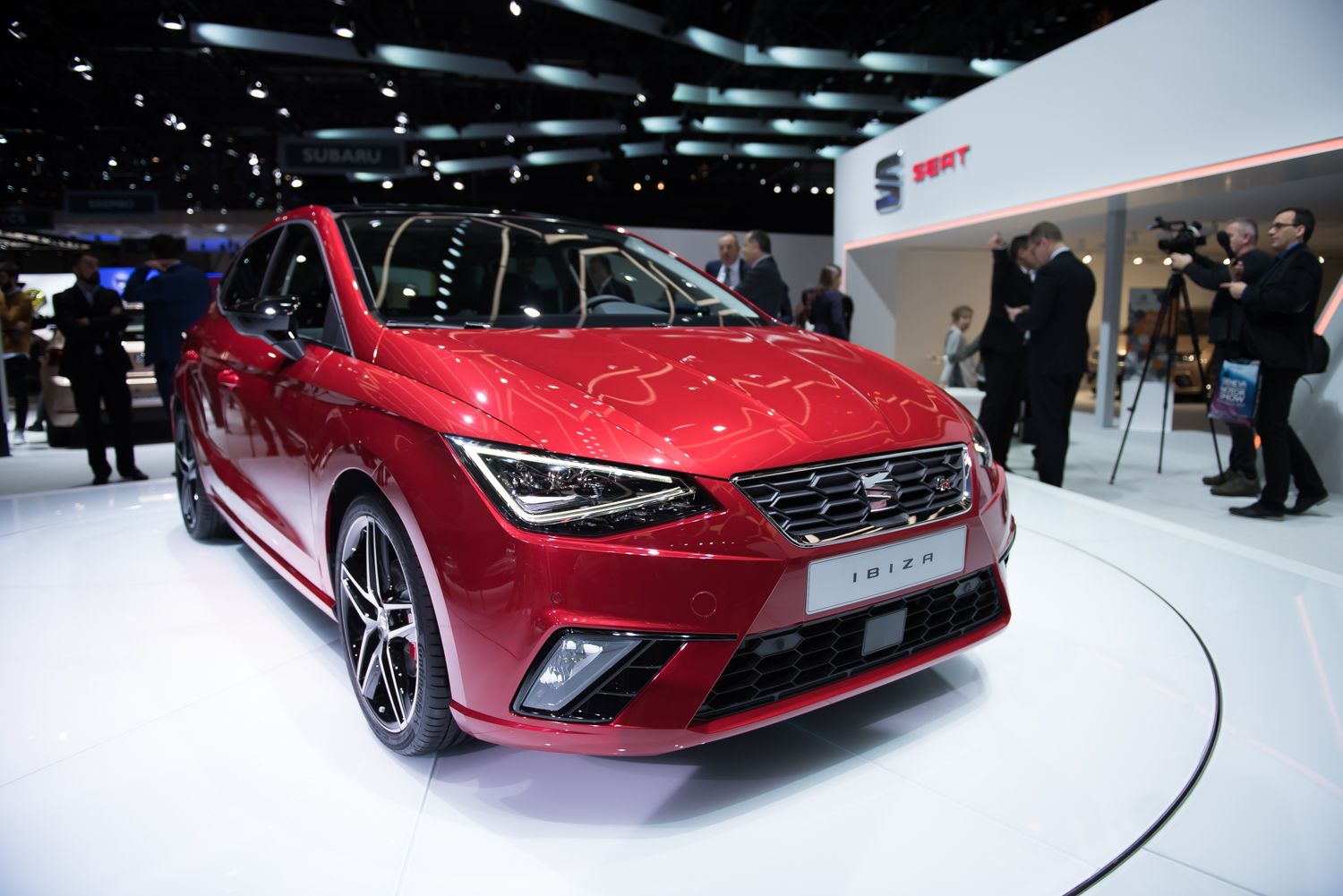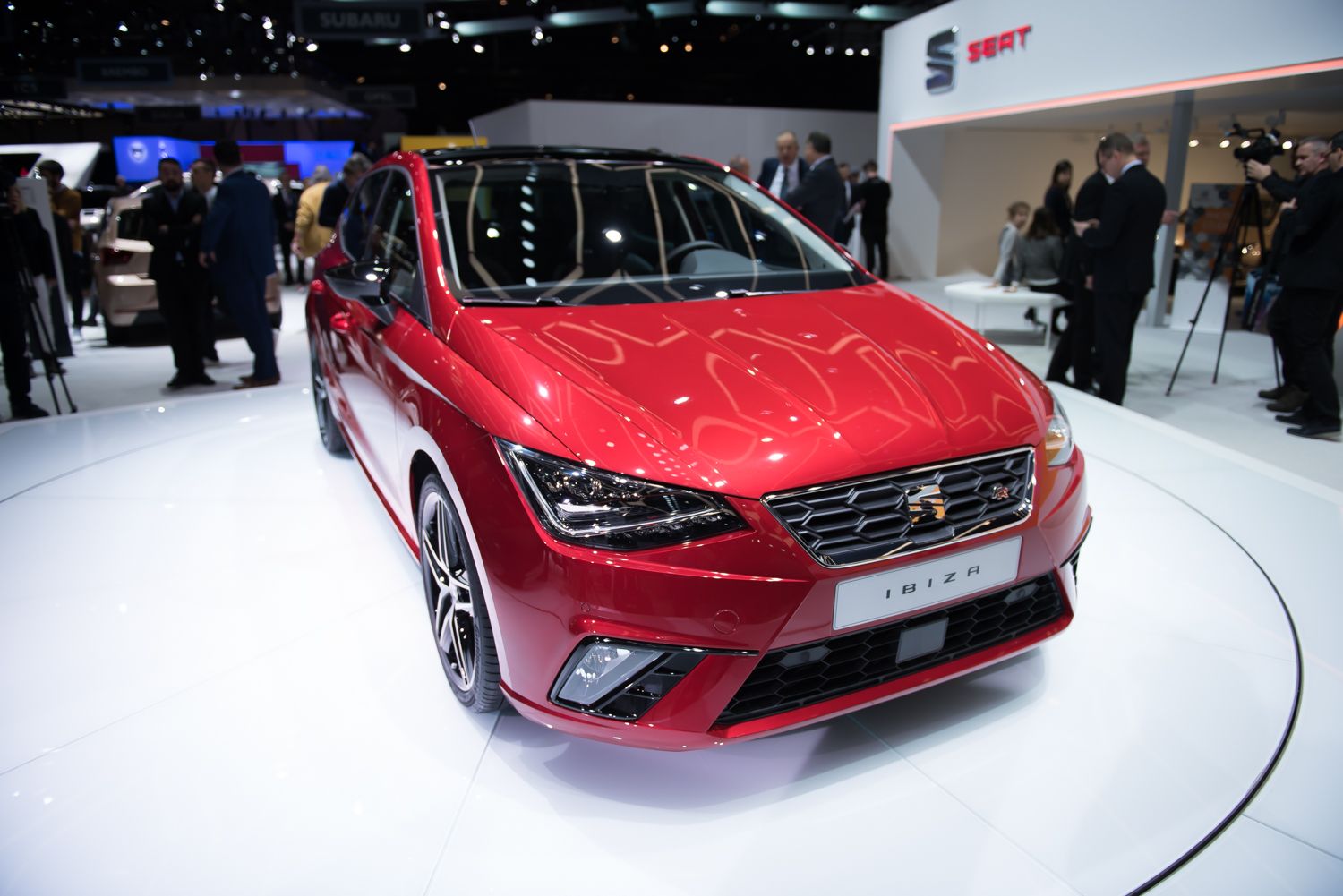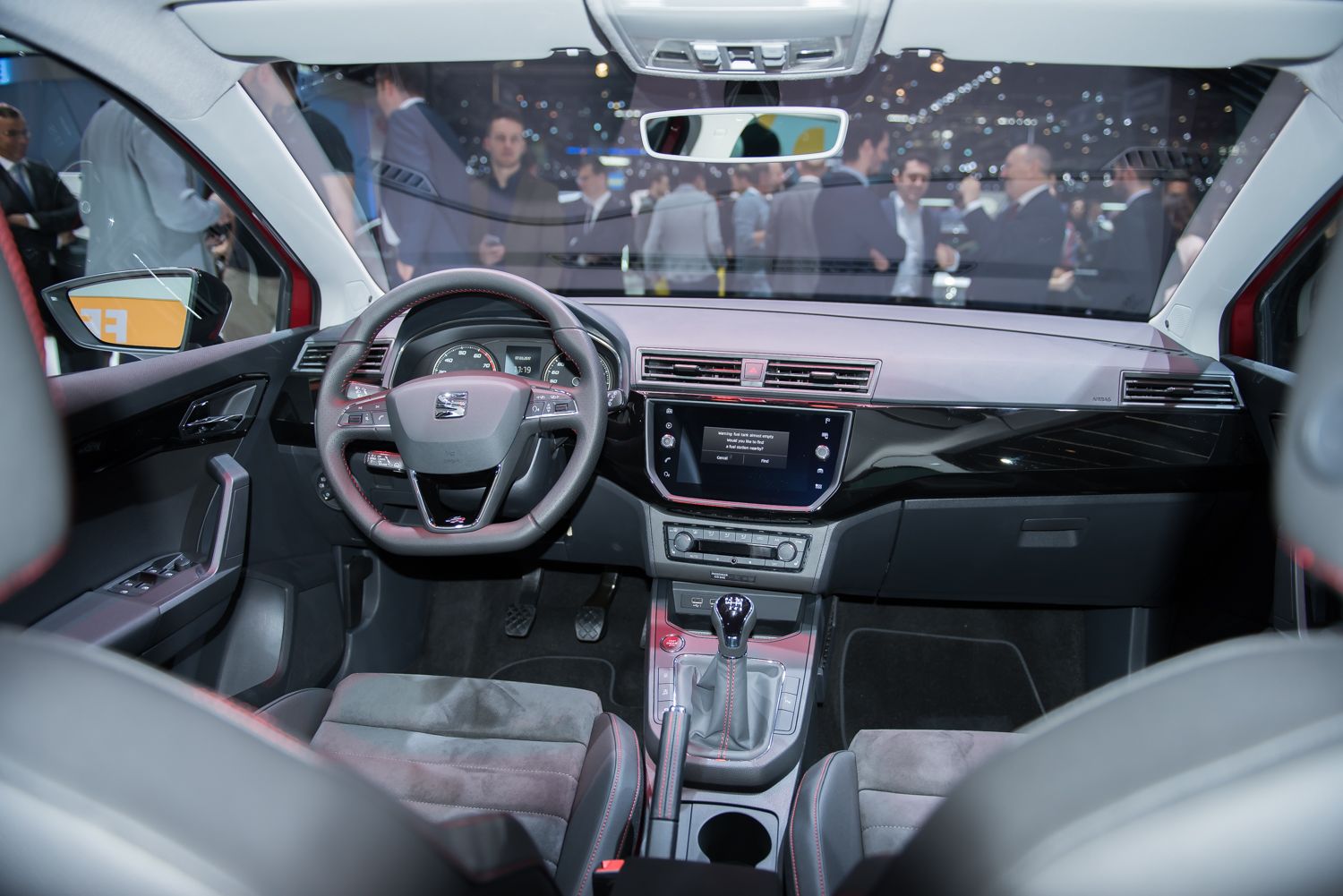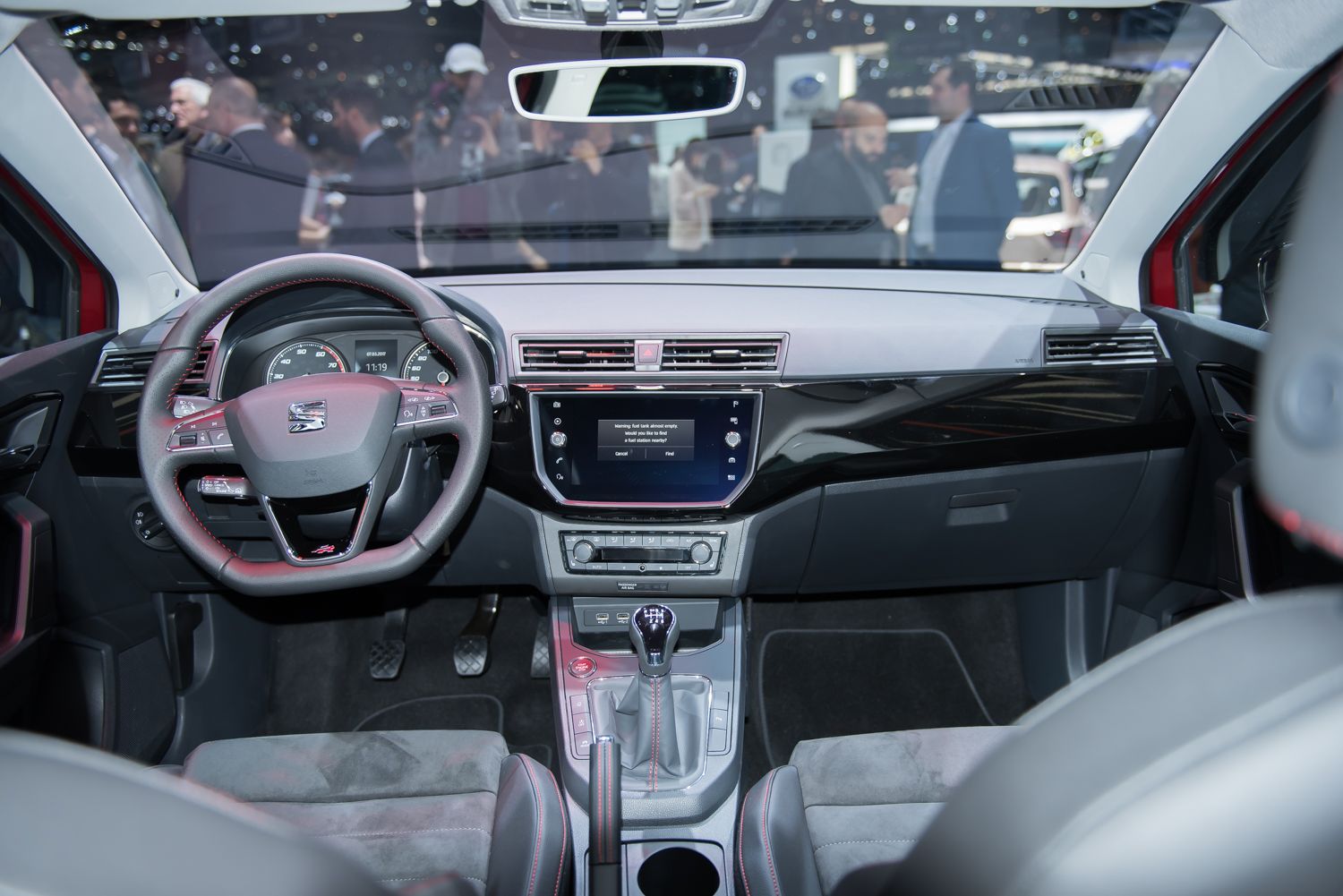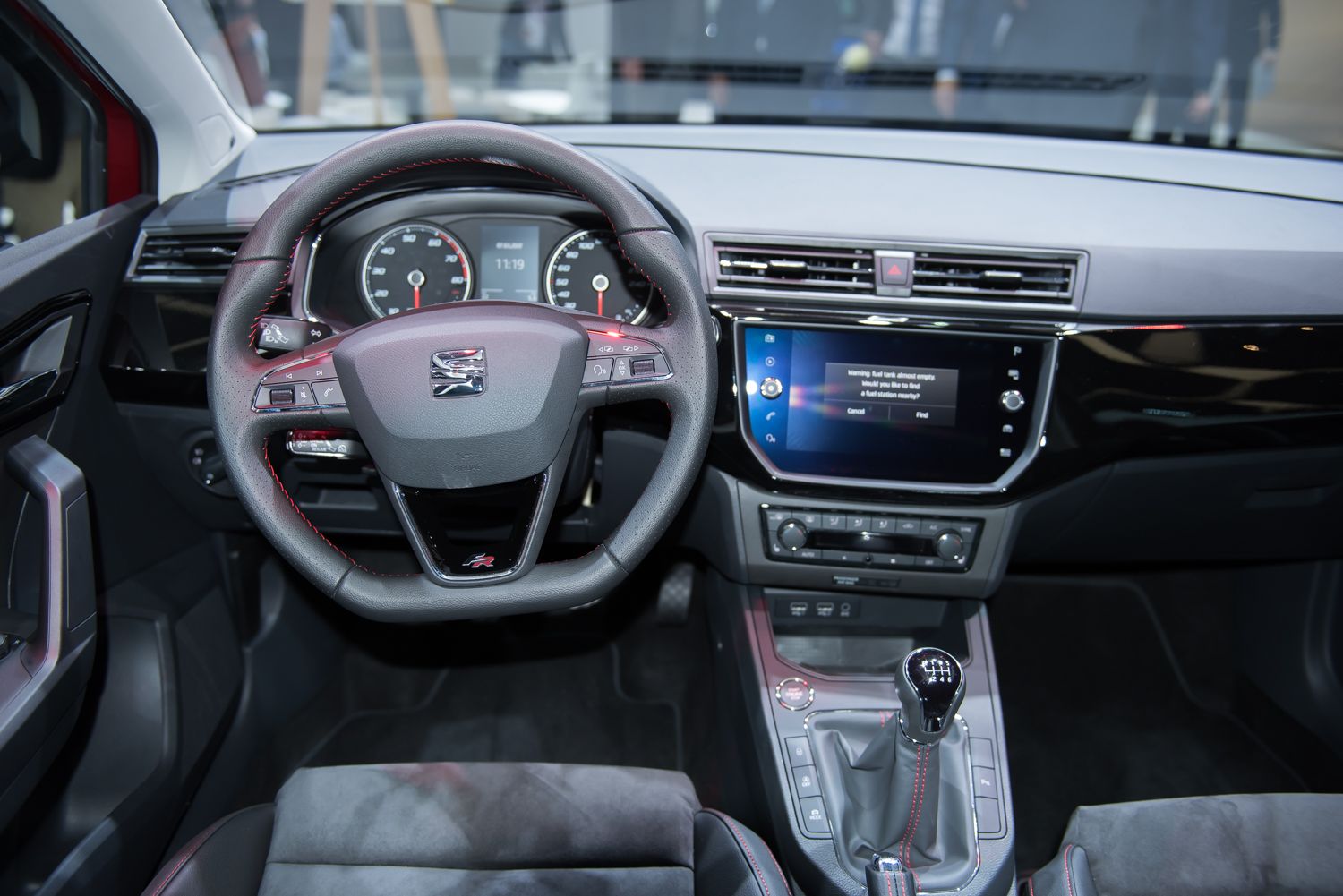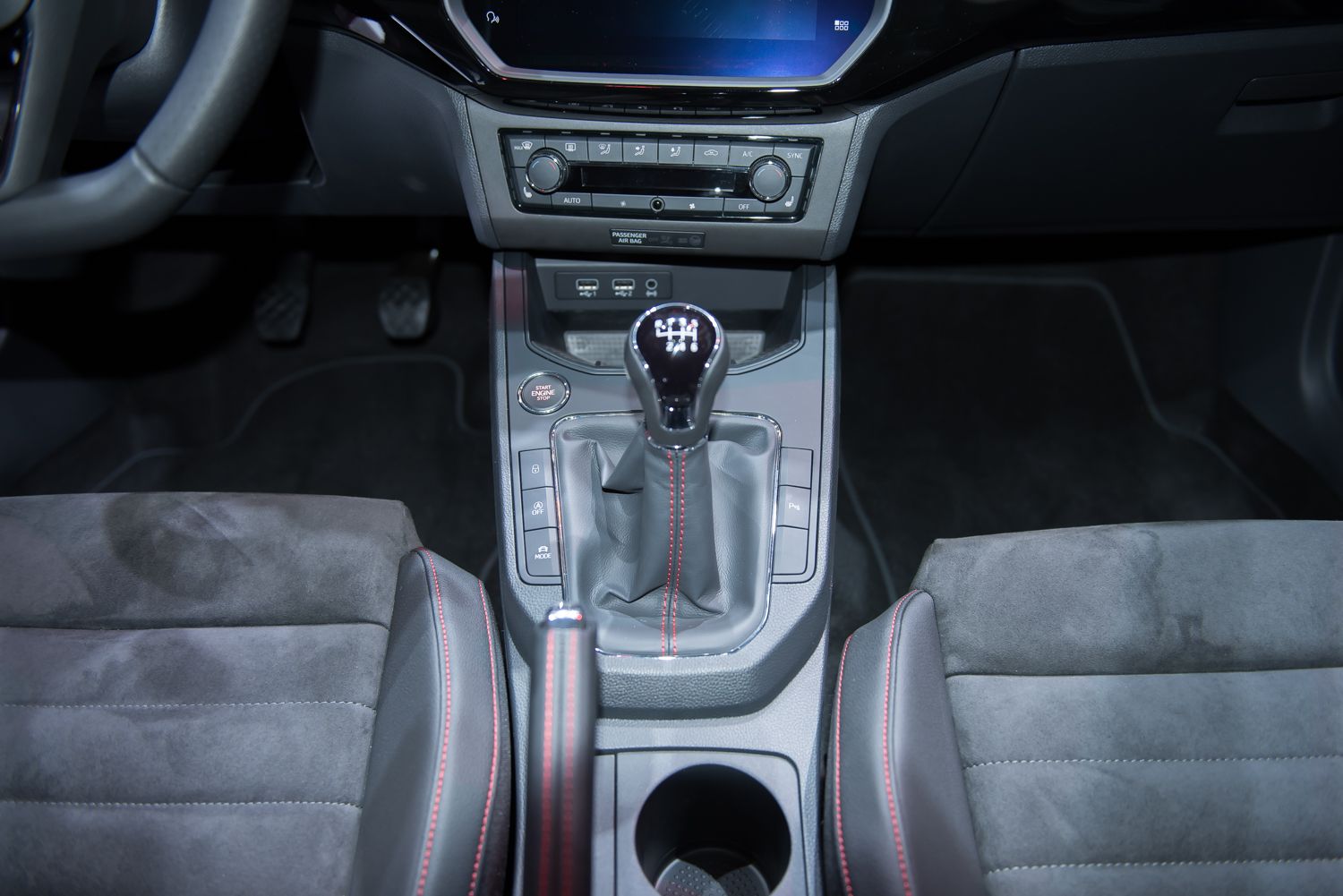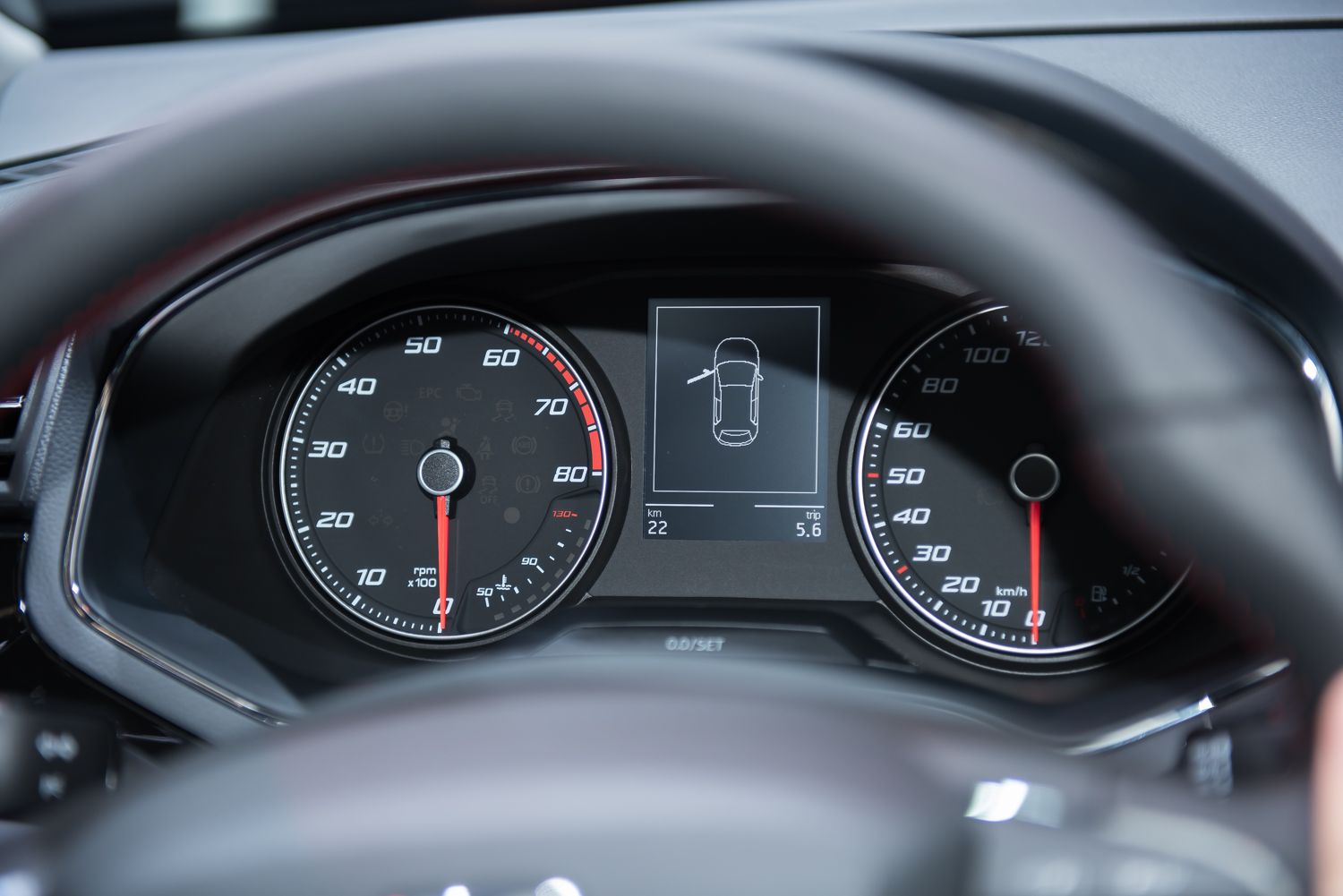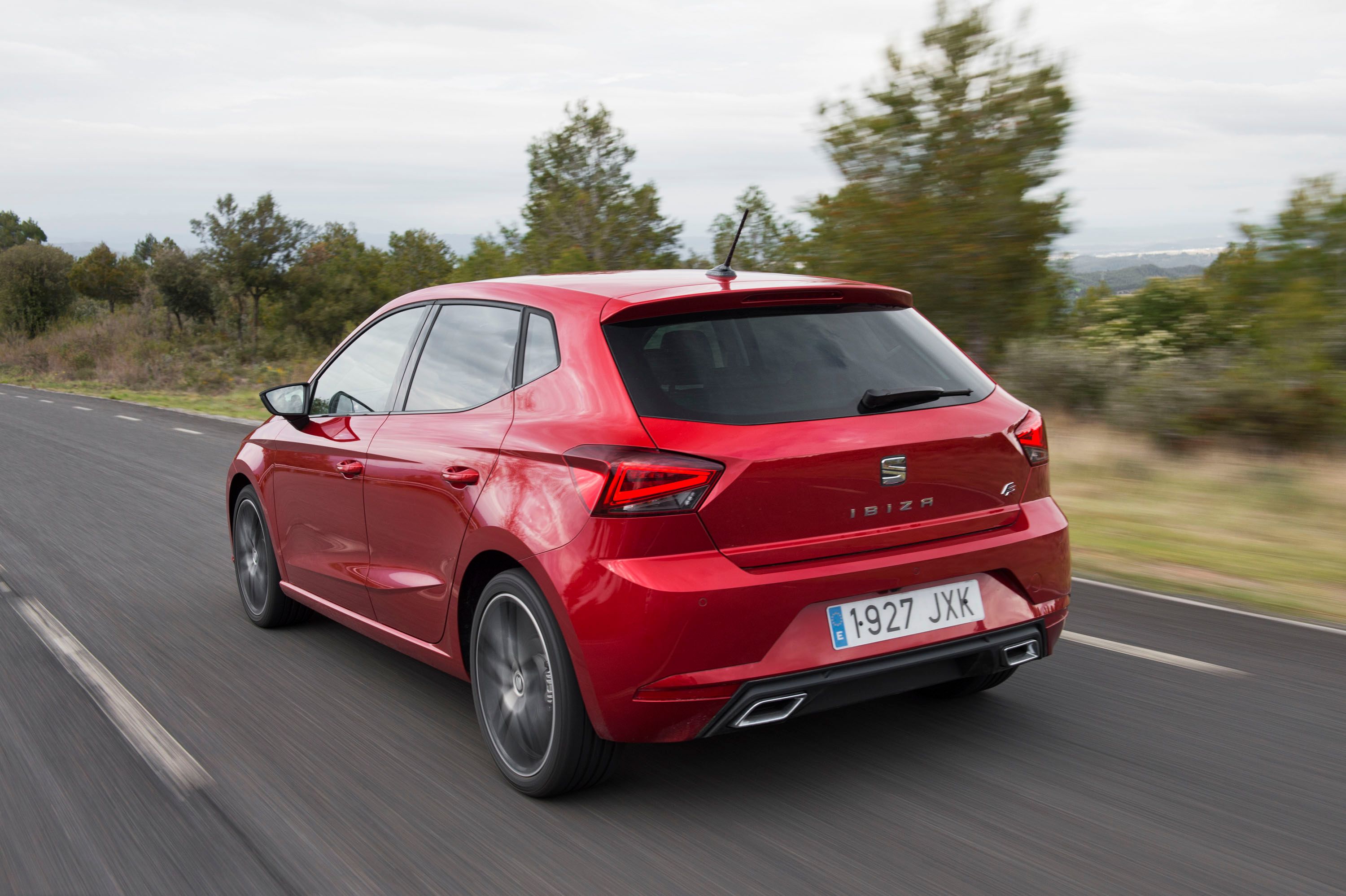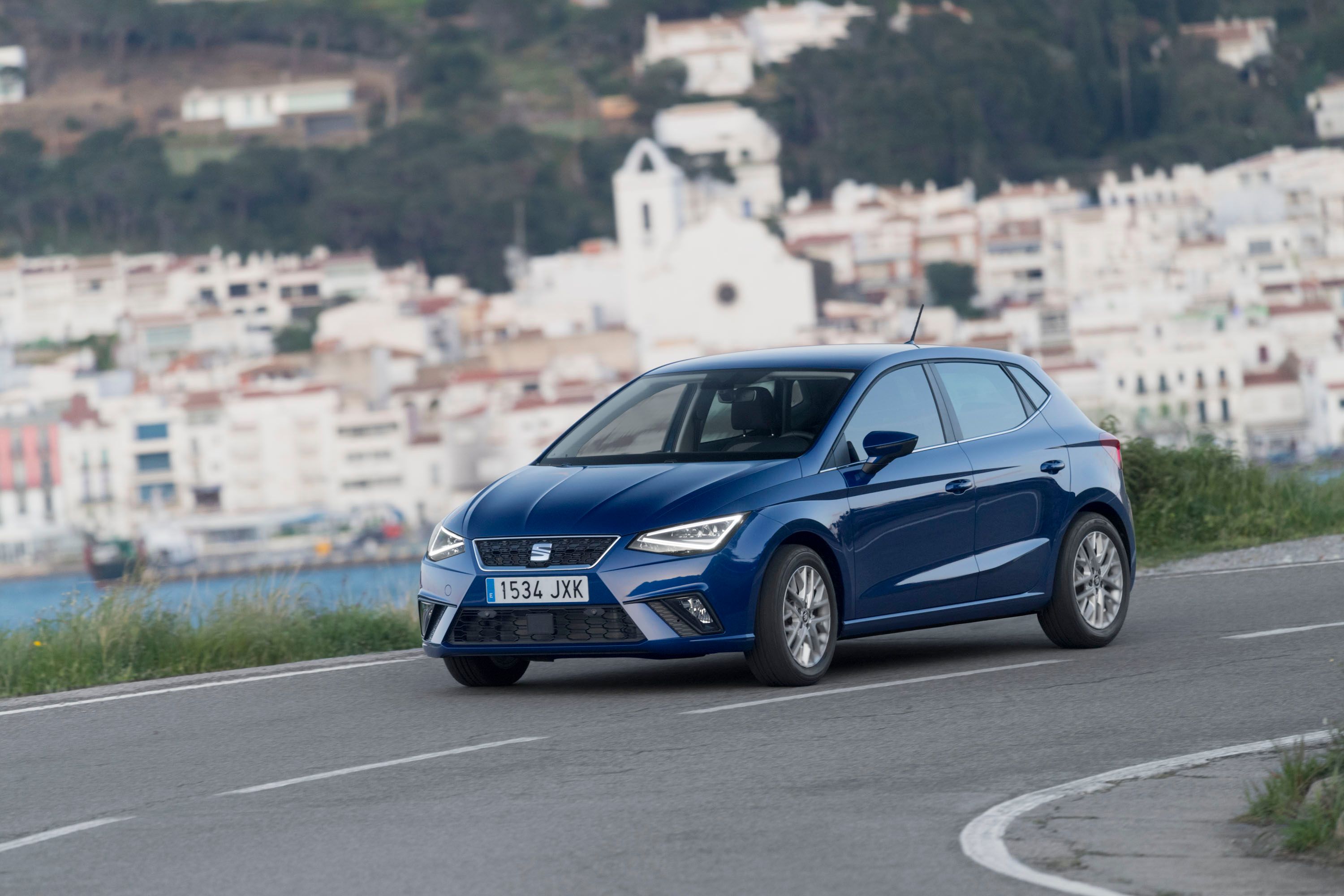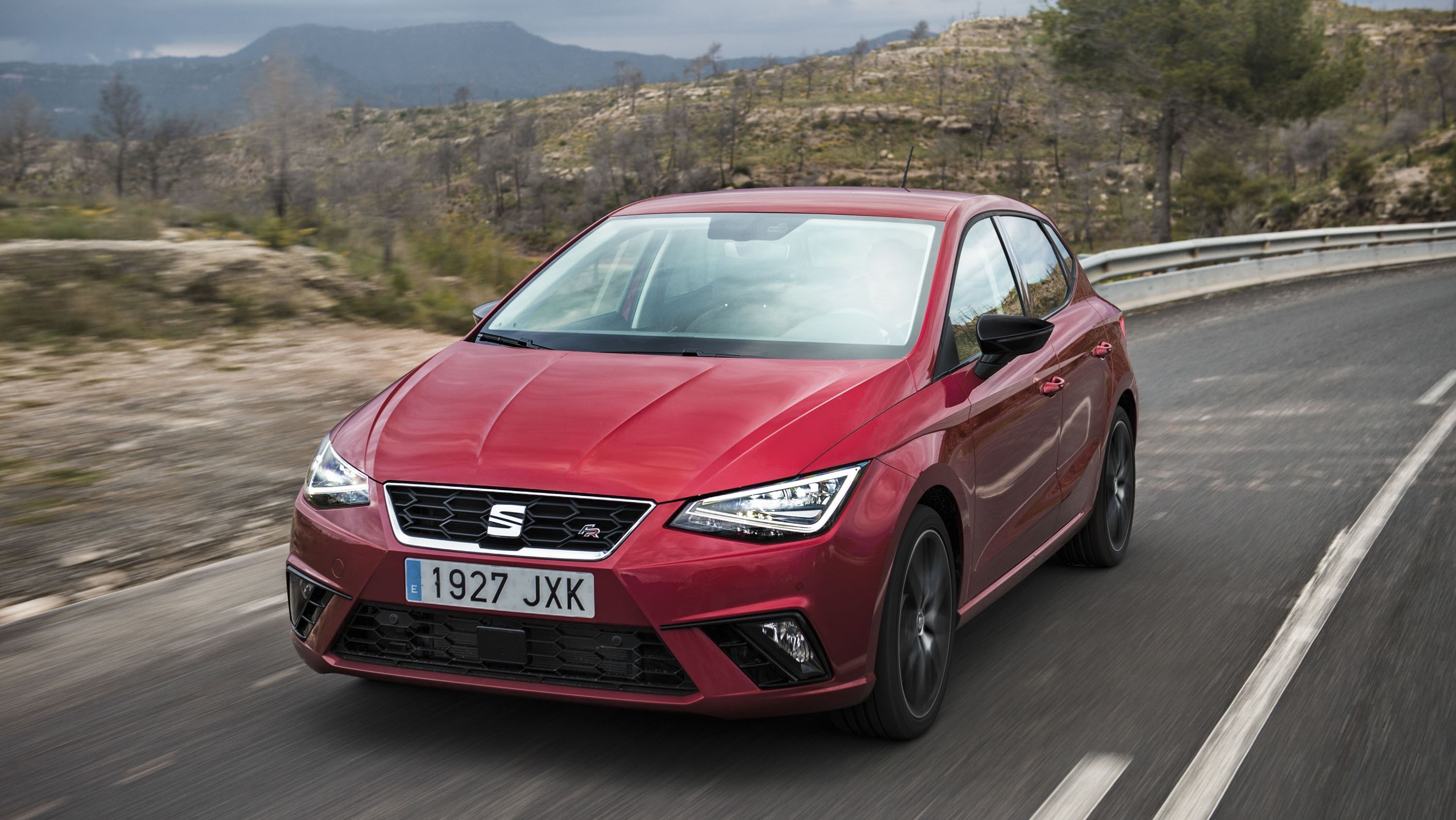First put into production in 1984, the Ibiza is one of Seat’s most successful models. In the 33 years it’s been on the market, the Spanish automaker has managed to move as many as 5.4 million examples of the Ibiza. That’s an impressive number, with a total of four generations coming and going over the years. Now, there’s a new fifth generation, which saw a debut earlier this year at the 2017 Geneva Motor Show following a reveal at the island that provided the car’s namesake, Ibiza, off the eastern coast of Spain. This refreshed entry in the supermini segment sees improvements across the board and was created in order to offer customers higher levels of safety, a fresh aesthetic, greater performance, and more comfort as well. Both gas and diesel powerplants are available, while a seven-speed automatic transmission and the latest smartphone support are on the table as well. Under the skin is a brand new platform, courtesy of Seat’s parent company, Volkswagen Auto Group.
Of course, as one of Seat’s most popular models, the trick is to add to what’s already there without taking away anything from the outgoing model. As such, the question is this – does the new Ibiza have the same spark as the old? Read on to find out.
Continue reading to learn more about the 2017 Seat Ibiza.
2017 Seat Ibiza
- Make: Array
- Model: 2017 Seat Ibiza
- Engine/Motor: inline-3
- Horsepower: 95
- [do not use] Vehicle Model: Array
Official video
Exterior
Seat is offering the Ibiza exclusively in a five-door body style, but says the exterior design was created in order to mimic that of a sportier three-door, as well as offer “an edgier, sportier design, featuring more sculpted, accentuated and streamlined surfaces.”
Overall, we think the brand succeeded in that regard. Looks good, no?
In front, we find two prominent character lines drawn across the hood, adding some visual beef to the front end. The fascia utilizes an x-shaped design, with lots of angles throughout. The profile reveals short overhangs in front and back, plus additional character lines that enhance the car’s natural forward lean. We really like the shoulder line and lower character line, as both lead the eye rearwards and into the rear fenders. Further into the tail, we find the taillights wrap around into the flanks. The tail also incorporates similar triangular designs for the taillight housings, mirroring the front end once again with an x-shaped design layout.
Further design elements are offered as unique bits per trim level. These include sportier elements (blacked-out trim, etc.), or a more premium appearance (chrome trim, etc.). Wheel sizing up to 18 inches, with two different colors to choose from.
The new-generation Ibiza also gets revisions to the exterior dimensions. These include a wider body, with as much as 87 mm (3.4 inches) added. Meanwhile, the overall length was slightly decreased, losing just 2 mm (0.08 inches), plus there was 1-mm reduction to the vehicle height as well. Under the body panels, you’ll find the track was increased by 60 mm (2.4 inches) in front and 48 mm (1.9 inches) in the rear. Wheelbase is now measured at 2,564 mm (100.9 inches), which is 95 mm (3.7 inches more than the previous generation.
These new dimensions and the overall styling changed are meant to give the car a “powerful image of a car that hugs the ground.”
Finally, the new Ibiza gets full LED lighting for the headlights, indicators, and rear fog lights, plus the traditional triangular housings and daytime running light graphics.
Exterior Dimensions
|
Wheelbase (Inches) |
100.9 |
|
Length (Inches) |
159.8 |
|
Width (Inches) |
70.07 |
|
Height (Inches) |
56.85 |
Interior
Step into the cabin of the Seat Ibiza, and you’re met with a somewhat simplified, yet elegant interior layout. The overarching design scheme draws similarities to the Leon and Ateca, but with “more tension, more technical and precise lines and lighter proportions”
Updates for the generation include new materials for a heightened sense of premium feel, as well as an emphasis on horizontal lines. The layout is driver-focused, with the various controls on the center console angled towards the hot seat.
A variety of customization options are offered, while a new Air Car filter handles the interior circulating air.
What’s more, the Seat Ibiza now offers a larger, roomier interior, mostly thanks to the new exterior dimensions previously discussed. For example, rear legroom saw a bump of 35 mm (1.4 inches), while there is 24 mm (0.9 inches) of extra headroom in front and 17 mm (0.6 inches) of extra headroom in the rear. The seats are now 42 mm (1.7 inches) wider as well. Cargo space saw an increase of 63 liters (2.2 cubic feet), up to a total of 355 liters (12.5 cubic feet), a figure Seat claims as best in class. Complementing the extra rear room is a lower load height.
Seat also says it improved the NVH levels substantially, although the automaker failed to provide exact specifications on this.
In terms of ambient lighting, both red and white LEDs were added to select trim levels. Seat says this isn’t just an improvement to the aesthetics, but should help reduce power draw as well, and thus improve fuel mileage, although we’re not sure how many more miles you’ll get by swapping the interior lights for LEDs. The headlights and taillights will have a much bigger impact in that regard.
And of course, like any new vehicle, having the latest and greatest technology is a must. To that end, the Seat Ibiza gets new driving assists, several of which were originally introduced on the Seat Leon and Seat Ateca. These new features include stuff like Front Assist, Adaptive Cruise Control, Keyless Entry (plus a “heartbeat engine starter”), new front and rear parking sensors, and a rearview camera.
Providing inputs is a standard 8.0-inch touchscreen, while a wireless charger for your smartphone keeps it in the green. Support for Apple CarPlay and Android Auto, as well as Mirror Link are on board.
Finally, Seat partnered with Beats Audio for the stereo system, which includes a digital signal processor, seven speakers, and an eight-channel 300-watt amplifier.
Drivetrain
For motivation, the Seat Ibiza is offered with a full line of Euro 6-compliant engine options. Kicking things off is three gas engines to choose from, each offering aluminum construction for reduced weight. Kicking it off is a 1.0-liter three-cylinder TSI, which can be had in two states of tune, with either 95 or 115 horsepower. Features for the gas engine include turbocharged induction, an intercooler, and fuel injection. Heading the list of gas-engines is an Evo 1.5-liter TSI four-cylinder making 150 horsepower, which will be available later in 2017.
A variety of diesels are also on the table, and include a 1.6-liter TDI in both a 80-horsepower and 95-horsepower variant.
Transmission options include a manual five-speed, which is offered on engines with 95 horsepower and below, plus a six-speed for those engines with more than 95 horses. A seven-speed dual-clutch automatic is also offered.
Some of the bigger news is that the fifth-generation Seat Ibiza was built on the new Volkswagen MQB A0 platform. In fact, the Ibiza is the first model from the Volkswagen Group to utilize the platform. The upgraded bones increase torsional rigidity by as much as 30 percent, which helps to improve ride quality and handling performance.
Further features include additional “hot formed” components for the construction, plus spot welding and laser technology, all of which work together to reduce overall weight and increasing torsional rigidity even further.
Prices
The new fifth-generation Seat Ibiza is available in U.K. dealers now. Buyers can have it in three separate trim levels. Starting off the line is the S, followed by the SE, FR, and finally headed by the new XCellence trim level.
Those looking for a sharper, sportier appearance are encouraged to check out the FR, which gets a unique rear diffuser, black styling updates to the bumper and various body panels, and a stiffer sport suspension set-up. The FR also includes four driving modes, such as Comfort, Eco, Sport, and Individual.
Pricing starts at 13,130 pounds.
Competition
Mini Cooper
If you want customizable style in a fun, affordable package, the Mini is the way to go. A plethora of drivetrain options are on the table, although anyone looking for an alternative to the Ibiza will likely go for the lower trim three-cylinder models. However, if you’ve got some extra coin to spend, the more expensive 2.0-liter models will offer a bigger bang.
Read our full review on the Mini Cooper.
Ford Fiesta
Ford knows what it’s doing when it comes to offering fun hatchbacks, and the Fiesta is definitely one of the best. The number of drivetrain options and specs is mind boggling, many of which offer some pretty entertaining performance. The suspension was also tuned for nippy handling, although the interior spec leaves something to be desired.
Read our full review on the Ford Fiesta.
Conclusion
As one of Seat’s most important models, this big generational changeover for the Ibiza is critical to the brand’s success. Overall, we like what we’re seeing. The car looks good, while the onboard technology is about where it needs to be. Performance-wise, we like the drivetrain specs here, with both efficient diesels and quicker gas-powered variants on the table.
Will it be enough to topple the other big names in the segment? So far, so good.
References
Seat Leon
Read our full review on the 2017 Seat Leon.
Seat Ateca
Read our full review on the 2016 Seat Ateca.
Read more Seat news.


